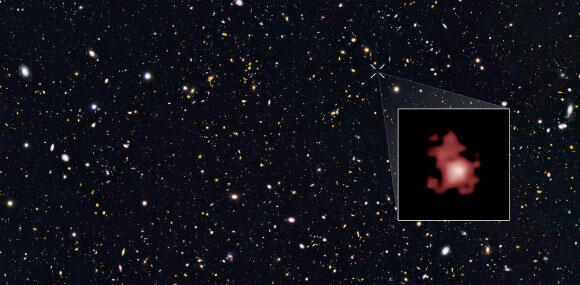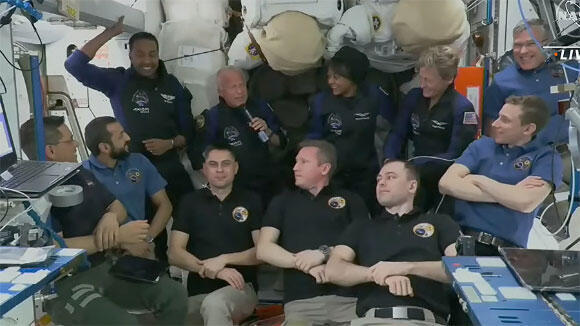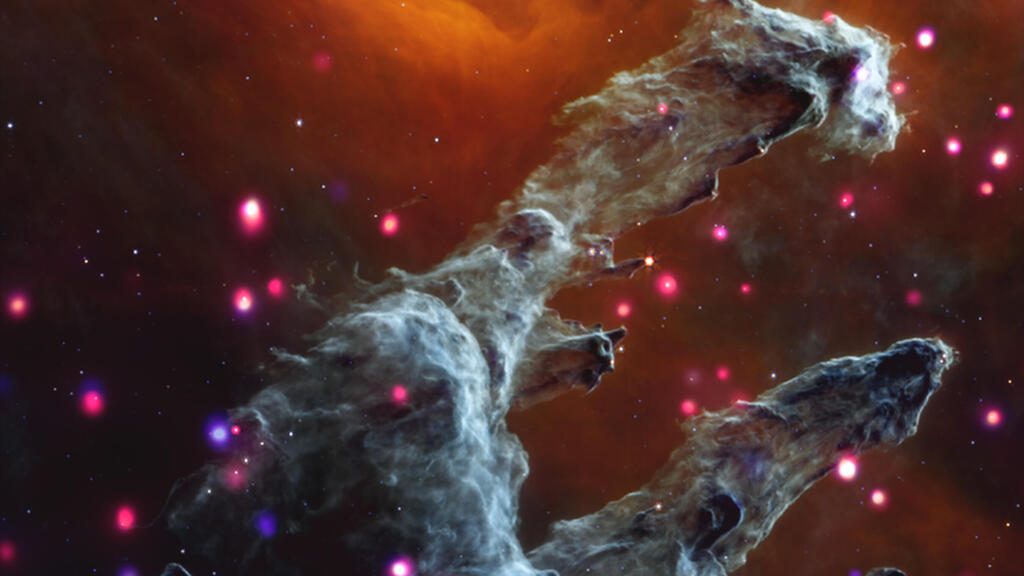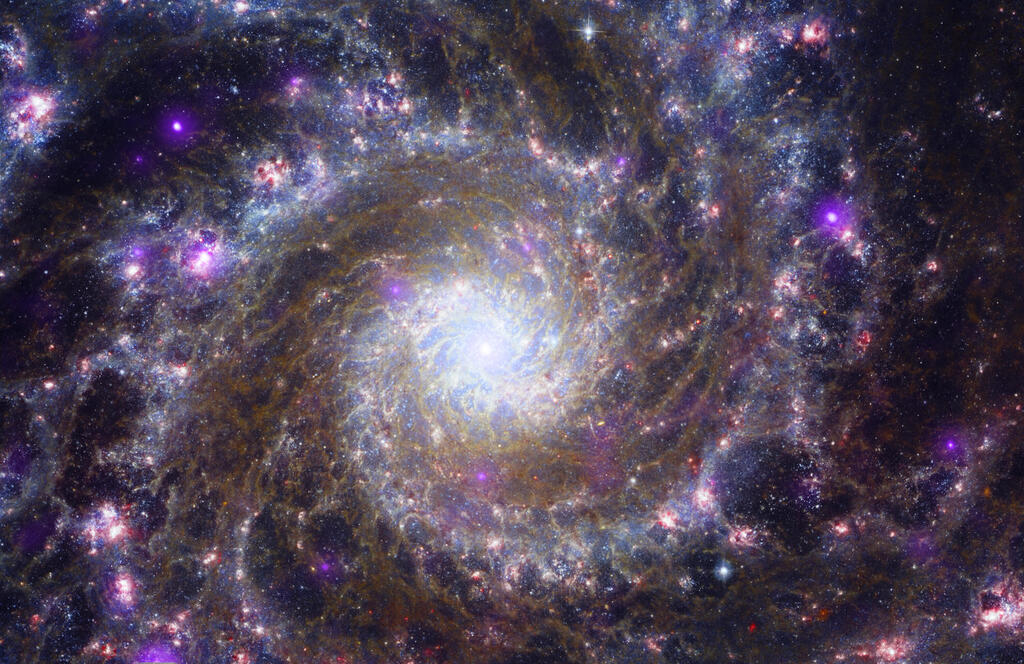Getting your Trinity Audio player ready...
The Stunning Pictures From the Telescopes Collaboration
Space telescopes provide stunning images of the universe, thanks to a combination of advanced technologies and observations made outside the constraints imposed by our atmosphere. However, due to physical limitations, each telescope can only observe a specific type of electromagnetic radiation, or a relatively narrow range of it, thus limiting our ability to gather all the information.
Other stories:
Scientists from NASA, the US space agency, have now created composite images from the data of several telescopes, spearheaded by the James Webb Space Telescope, which primarily observes infrared radiation, and the Chandra Space Telescope, which observes X-rays. The image processing includes converting different radiation ranges into colors of visible light, enabling us to appreciate the wealth of information that these objects present.
The pictures also incorporate data from other space telescopes, such as Hubble and Spitzer, and from powerful ground-based telescopes. The outcome is a collection of particularly stunning and unprecedentedly detailed images that capture some of the most magnificent cosmic landscapes our universe has to offer. Clicking on the images will reveal their full-sized version.
The Eagle Nebula - 'Pillars of Creation'
The Eagle Nebula, officially known as M16 or NGC 6611, is approximately 5,700 light-years away from us. This region is a hotbed for the formation of new stars, and the nebula earned the nickname 'Pillars of Creation' following a famous photo taken by the Hubble Space Telescope. Images from the James Webb reveal the dust and gas clouds, while Chandra's contributions to the picture are the young stars emitting X-rays. In this image, the wavelengths of the X-rays were translated into red and blue, while the infrared wavelengths were converted into red, green, and blue.
M74 Galaxy
The M74 galaxy, or NGC 628, is a spiral galaxy situated about 30 million light-years away from us. It's also referred to as the Phantom (or Ghost) Galaxy, due to its faint radiation, which is difficult to observe with smaller telescopes. Here too, the Chandra telescope reveals the energetically active areas, displayed in purple, while the James Webb telescope reveals the dust and gas, colored in green, yellow, red, and magenta blue In addition, components photographed in visible light by the Hubble telescope, including the stars and gas stripes, appear here in blue and orange.
NGC 1672 Galaxy
The NGC 1672 galaxy, located approximately 50 million light years away from us, is an elongated spiral galaxy. From our vantage point, its center doesn't appear circular, but rather takes on the form of a line or rod. Images provided by the Chandra Space Telescope, depicted in purple, reveal the presence of heavy objects such as neutron stars or black holes, which absorb material from their surroundings. The rapid motion of this material emits X-rays. The images from James Webb Space Telescope and the Hubble Space Telescope show the dust and gas between the stars, represented in hues of red, green, and blue.
Star Cluster NGC 346
This star cluster is situated in the Small Magellanic Cloud, one of the galaxies closest to the Milky Way, about 200 thousand light-years from us. Here, the images from the James Webb telescope depicted in red, green, and blue, showcase the pillars and arches of gas from which protostars are formed around young stars. The images from Chandra, notably the purple spot on the left, reveal remnants of a supernova – the explosion of a large star. Here too, data from images taken by Hubble, Spitzer, and ground-based telescopes are combined.
The Giant Suns of the Early Universe
In another study involving the James Webb Space Telescope, researchers are trying to discover what the universe's earliest stars, formed shortly after the Big Bang, may have looked like.
The team, led by Corinne Charbonnel from the University of Geneva, aimed the telescope at one of the oldest galaxies discovered so far, GN-z11. Situated approximately 13.3 billion light-years away from us, we observe it today as it existed about 440 million years after the Big Bang.
The spectrometer of the James Webb Space Telescope facilitates analysis of its light composition, thereby aiding in identifying its constituent materials. Observations revealed an unusually high concentration of neon in this galaxy, with a nitrogen-to-oxygen ratio in its interstellar space that is four times larger than found in our environment.
One possible explanation for such a quantitative ratio between nitrogen and oxygen could be the existence of giant stars, 10,000 times larger than our sun. The enormous temperature and pressure in the core of such stars would guide the fusion of hydrogen along a path where more nitrogen and less oxygen would be produced, unlike the processes we are familiar with today in the cores of stars.
4 View gallery


There might have been enormous stars there. Surroundings of the ancient galaxy GN-z11
(Photo: the Hubble Space Telescope | Source: NASA, ESA, P. Oesch (Yale University), G. Brammer (STScI), P. van Dokkum (Yale University), and G. Illingworth (University of California, Santa Cruz))
Stars with such a large mass are expected to survive for a relatively short period. If they existed, they likely exploded before the light currently reaching us from this distant galaxy commenced its journey toward us.
However, researchers believe that the elements that these giant stars scattered everywhere during their collapse remained in the area, and incorporated into the stars that later formed from them. Therefore, the chemical composition of the galaxy today may attest to the existence of those very early and massive suns.
"The strong presence of nitrogen can only be explained by the combustion of hydrogen at extremely high temperatures, which only the core of supermassive stars can reach, as shown by the models of a Master's student in our team,” explained Charbonnel.
Station at Full Capacity
The International Space Station is currently home to 11 crew members, following the arrival of the second private mission, AX-2, at the station earlier this week. The team comprises four private astronauts, including the first two representatives from Saudi Arabia to ever be on the station.
The commander of the private mission, Peggy Whitson, who currently works for Axiom, is the most experienced astronaut among the extended team on the station. This is her fourth visit to the International Space Station, and in the previous three she accumulated 665 days in space – more than any other American astronaut.
The private team has joined the seven regular crew members currently stationed there - three Americans, three Russians, and one representative from the United Arab Emirates.
The private team's arrival aboard SpaceX's Dragon spacecraft has increased the total number of spacecraft currently docked at the station to four, including two Dragon spacecraft.
Next week, the number is expected to rise to five, with the docking of an unmanned Russian supply spacecraft, scheduled for launch on Wednesday. The private team is slated to remain on the station for ten days, until the end of next week, and conduct numerous experiments. These include the Israeli experiment ILAN-ES, designed to photograph "sprites" and other atmospheric phenomena that occur above the clouds during thunderstorms.
The Dissolution of Virgin Orbit
Three weeks ago, we reported here on the bankruptcy of Virgin Orbit, a company that developed a service for launching small satellites on a missile launched from a Boeing 747. Its first attempt in January this year ended in failure, when the launch missile crashed, along with the nine satellites it was carrying. The company's managers held out hope for a rescuing buyer, but these hopes have now been dashed as several companies have won bids to purchase its assets.
4 View gallery


Not only is the station full, but the parking lot is also crowded. The seven regular crew members with the four guests from the private mission
(Photo: NASA TV)
Rocket Lab, a rocket company, is set to pay 16 million dollars for Virgin's facilities in California, to expand its adjacent production area. Another company, Stratolaunch, is acquiring the Boeing aircraft for 17 million dollars. A third company, Launcher, will pay approximately $3 million for Virgin Orbit's lease rights at a test site in the Mojave Desert in California, as well as for the equipment already present there. These sales will cover part of the debts the company left behind, leaving the business model of launching satellites from an aircraft.



